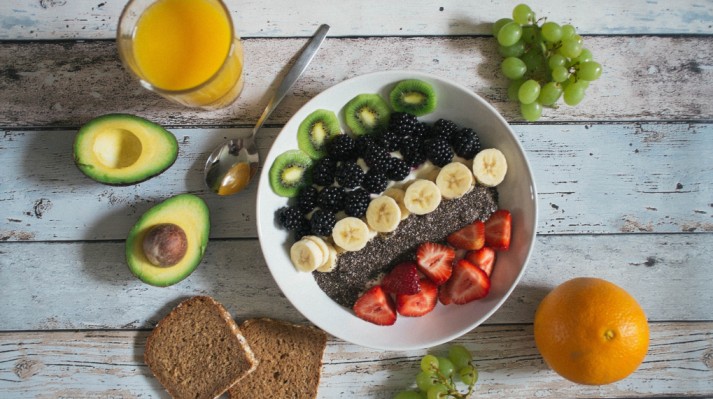Lately, the ketogenic diet, or ‘keto diet,’ has gained traction among followers searching for a weight loss method. This is due to its low-carbohydrate, high-fat approach that is effective in weight loss. When carb intake is lowered significantly, fat is utilized as a replacement source of energy, hence driving the body into a state known as ketosis. People embrace the keto diet not only because of its fat-burning efficacy but also because it maintains their appetite and enhances metabolic function. This guide is designed to provide an in-depth analysis of the keto diet and how it might be applied towards effective weight loss.
What is the Keto Diet?
The keto diet centers around a specific macronutrient ratio that has a very high amount of fats, adequate proteins, and a very low quantity of carbohydrates. Generally speaking, the percentage distribution is 70% fats, 20% proteins, and only 10% carbs. Because of the low carb intake, there is also low availability of glucose, which is the preferred energy of the body. This means that the body turns to fat for energy. When fats are broken down, ketones are formed as a result, and ketones serve as the energy source during ketosis. In other words, the keto diet promotes transition within the body in the way that energy is supplied. The body switches from using carbohydrates to fats. This is the basic principle behind the keto diet and weight loss.
How Does the Keto Diet Promote Weight Loss?
There are multiple ways in which the keto diet encourages weight loss. First, it lowers the levels of insulin, which is considered the storage hormone. Reduced levels of insulin lead to less fat storage and more fat being broken down. Second, once the body goes into ketosis, it becomes very effective in using fat for energy—from the diet and the body. Also, due to the nature of the diet, where fats and proteins are emphasized more, the appetite is reduced; therefore, caloric intake is also lowered. Since there is less fat storage, more fat is burnt for energy, and the appetite is suppressed, the keto diet becomes effective for weight loss.
Benefits of the Keto Diet for Weight Loss
For weight loss, the keto diet has several benefits below-given are some benefits you can get if you choose a keto diet for your weight loss journey
Enhanced Fat Burning
One of the most significant benefits of the keto diet is its ability to accelerate fat oxidation. There’s constant fat-shifting since when the body is in a stage of ketogenesis, it is using fats from both the diet and the body as its main energy fuel. This will result in a loss of weight very quickly with the diet, especially during the initial stage of the diet, which water weight can often accompany. After some time, a body creates a habit of consuming fat as a source of energy and burning it continually.
Improved Blood Sugar Control
Another gain from this diet is the effect it has on blood sugar and insulin levels in the body. Drastically cutting down the consumption of carbohydrates means that the blood sugar levels will fluctuate minimally, which is a good thing, especially for persons suffering from insulin resistance and type 2 diabetes. Stabilizing blood sugar helps not only with metabolic health but also helps manage hunger and cravings, which means that it is easier to maintain the calorie deficit that these people need to have to be able to lose weight. The net effect is that one’s energy level becomes more even, which helps in controlling overeating and thus leads to weight loss.
Foods to Include in a Keto Diet Plan
When on the keto diet, there are some foods that you need to include in your diet. To make your diet complete and get the energy you need.
Keto-Friendly Foods
The key factor in contemplating how to start the keto diet successfully has to do with the food that is chosen in the diet: it should be high in natural fats and low in carbohydrates. Add such meals as avocados, nuts, seeds, oils, etc. These fats should replace carbs in the body to provide energy. Protein sources, especially fatty fish and such birds as chicken or eggs with a low carb content, can also be included in these diets, as these proteins help in providing organic amino acids whilst minimizing the intake of carbs. These meals can help keep the desired macronutrient ratio, putting the body in a state of ketosis and using fat as an energy source.
Vegetables and Low-Carb Fruits
Vegetables, too, have to be included in a balanced keto diet. However, not all vegetables will have a similar count of carbohydrates. Spinach, kale, and lettuce, together with broccoli and cauliflower, which are fibrous and nutrient-dense, make an excellent choice for a keto diet as they contain very few carbohydrates. Low-carb fruits like berries can be taken but in lesser amounts. These fruits provide vitamins and antioxidants whilst keeping the carb content within the daily range.
Foods to Avoid on a Keto Diet
Also, you have to avoid some foods when you are on the keto diet.
High-Carbohydrate Foods
For the keto diet to be effective, the first step would be to shun away foods that are rich in carbohydrates. These include bread, pasta, rice, and sugary foods such as candies and biscuits, which can easily take the body out of the state of ketosis. Even some foods that seem to be ideal, like grains and beans, as well as starchy foods, for example, potatoes, should be kept in check because they contain high levels of carbohydrates. Further, beware of any hidden carbs in sauces, dressings, and beverages, as these could easily increase the carb count without your knowledge.
Processed Foods
Even though keto diets have become popular amongst bodybuilders and athletes, processed foods should not be consumed during this diet, advises a sports nutritionist. Most processed foods contain certain additives that are unhealthy, which include sugars, unhealthy fats, and preservatives that disrupt the process of ketosis. In this case, it’s important to rather focus on whole foods that are rich in nutrients, as this is important for weight loss and health. Foods that are processed are always calorie-dense but nutrient-deficient, which leads to overindulging and sabotaging weight loss efforts. These foods should be avoided as they ensure that one is consuming proteins and high fats of good quality, therefore encouraging the process of ketosis and incurring sustained weight loss.
Creating a Keto Meal Plan for Weight Loss
Let’s create a keto meal plan for weight loss and remember these things when you are creating a keto diet plan
Designing a Weekly Meal Plan
Creating a meal plan on a keto diet with a valid structure is important for one to stay on ketosis and facilitate weight loss. To start one can create a weekly meal plan and make this a habit, including a variety of keto foods that will ensure that they don’t get bored and also ensure that all the nutrients are available. Meal preparation is always effective for those on ketogenic diets because it controls portions and simplifies the availability of keto meals. Hurt the need to prepare meals in advance to eliminate the chances of shrinking food and selecting unhealthy foods to aid weight loss efforts.
Sample Keto Meal Ideas
If you’re a fan of eggs, then a keto diet is easy for you. Eggs can be used as scrambled eggs cooked in butter with avocado slices or as a frittata with spinach and cheese as an ideal breakfast. For lunch, try a salad with greens and grilled chicken, finished with olive oil. In the evening, choose salmon and roasted broccoli or meatballs and cauliflower rice. Nuts, cheese, and eggs can serve as snacks in between meals.
Staying Hydrated and Maintaining Electrolyte Balance
The vegetarian keto diet eliminates the urge for hunger by giving ample energy to people who have overweight issues. Decreased levels of glycogen present in muscles lower the amount of water within the body. Such dehydration and reduction in electrolytes can give rise to minor issues like headaches, which are quite common in people who are referred to as having ‘keto flu’. However, such problems can be managed by consuming a lot of fluids and intake of foods like spinach, avocados, and bone broth with added supplementation of electrolytes regularly.
Conclusion
The keto diet stands as perhaps the most efficacious approach to losing weight in terms of encouraging the body to utilize fat as a source of energy, suppressing hunger pangs, and also optimizing metabolic processes. With adequate fats, a moderate intake of proteins, and a very low carbohydrate intake, individuals can experience consistent weight loss whilst reaping all the health benefits that come alongside ketosis. That said, it is important to note that people will utilize keto successfully only with proper diet planning, steadfastness, and a willingness to transform their eating habits for the long term. By following the rules listed in this guide, you can use the keto diet to its maximum potential and lose weight as well as be healthy. It is always best to get a personalized diet plan from a professional dietitian or nutritionist. Dietitian experts from QUA Nutrition will help you get the best and most personalized keto diet for your needs. To get our service, please contact us.









